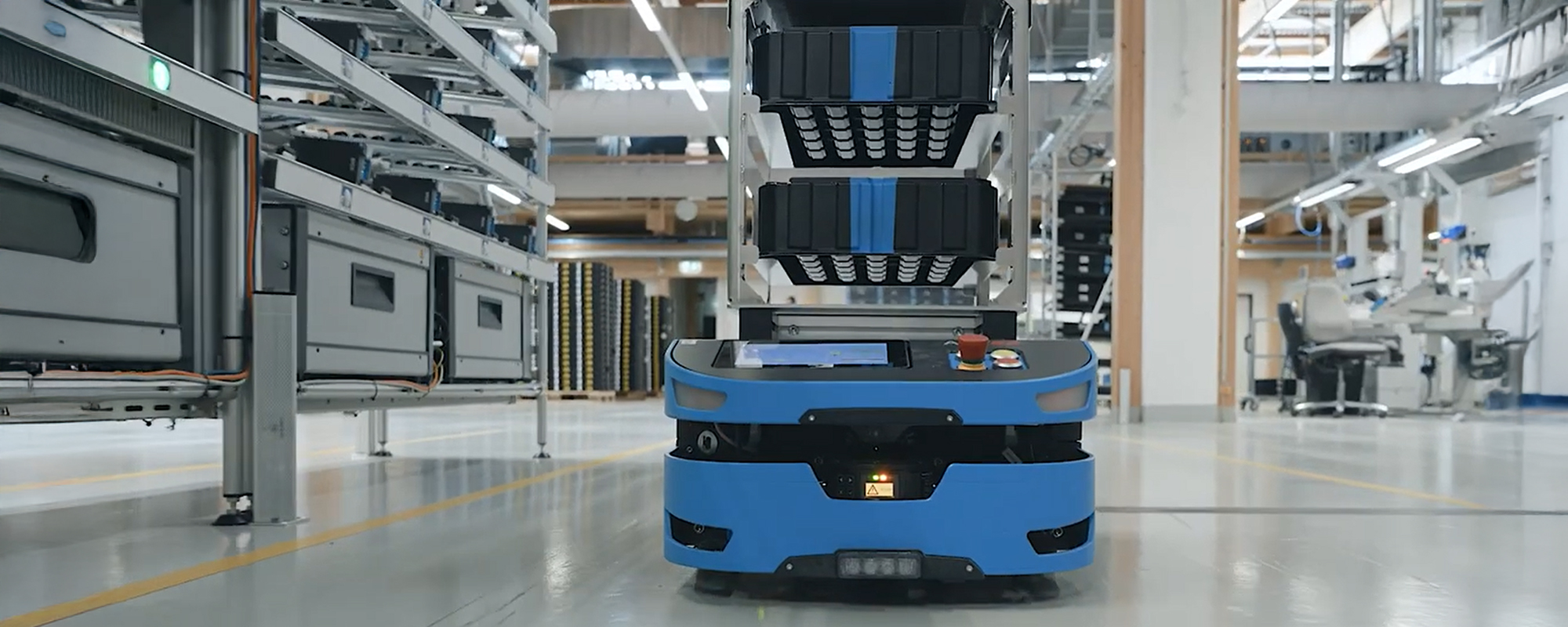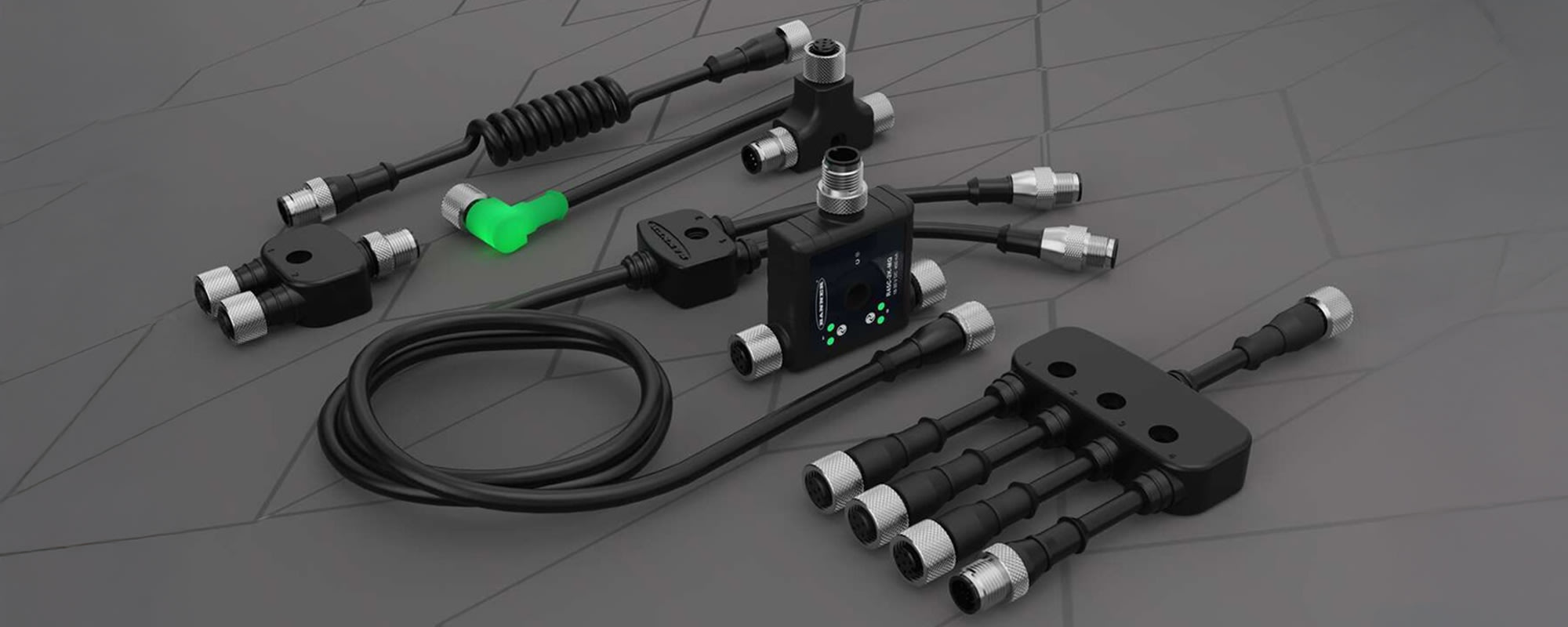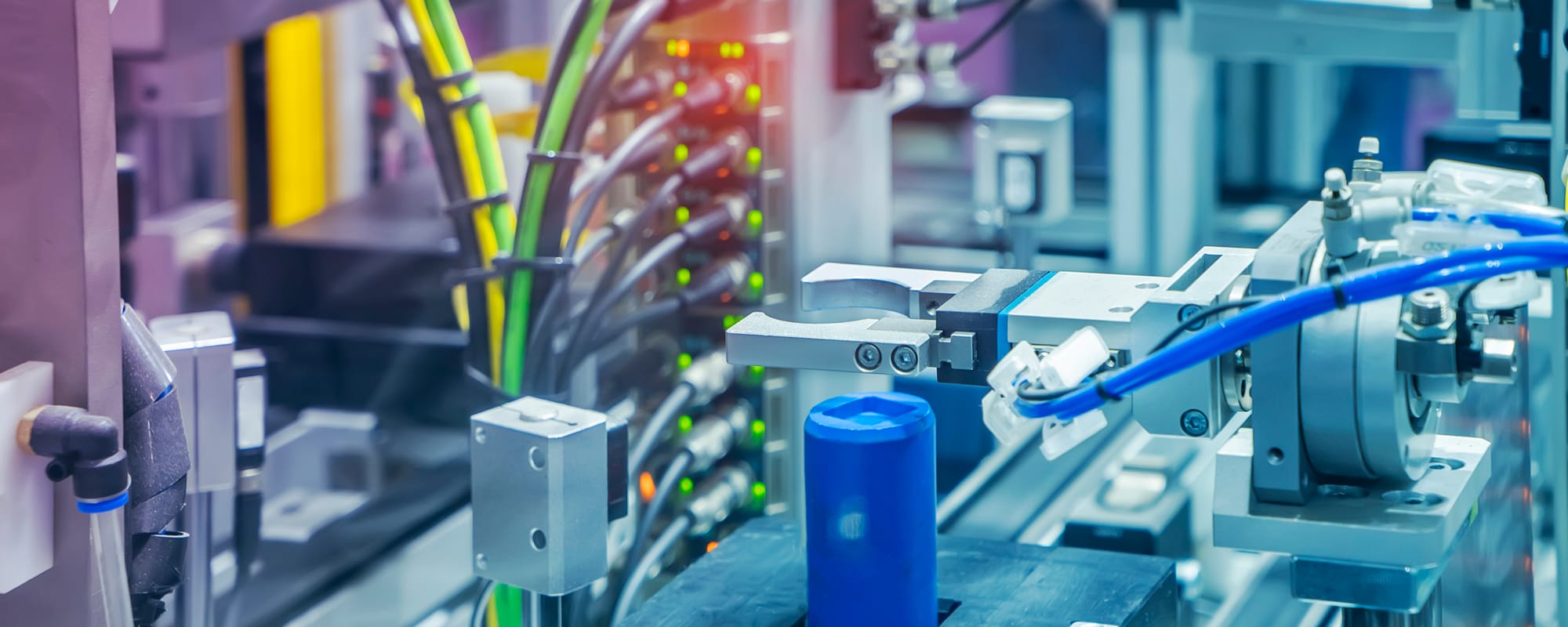We spoke with SICK Market Product Manager Aaron Rothmeyer to learn more about LiDAR. Aaron addresses the origins of the technology, breaks down the basics, shares solutions to common selection and implementation challenges, and introduces the SICK difference and its latest LiDAR innovations.

The global LiDAR sensors market is booming, fueled by steady growth in industrial automation, inertial navigation system, aerial, corridor mapping, exploration and detection, civil engineering, and forestry and agriculture applications. A new 2025 market report values the current LiDAR market at $2.89 billion and expects it to grow to a valuation of $15.83 billion by 2034.
We spoke to Aaron Rothmeyer, the Market Product Manager – Sales and Service at SICK, to learn more. Here, Aaron addresses the origins of the technology, breaks down the basics, shares solutions to common selection and implementation challenges, and introduces the SICK difference and its latest LiDAR innovations.
Hi Aaron. Please introduce yourself and tell us a little about SICK
I graduated from Iowa State University back in 2005 with an electrical engineering degree, which gave me a lot of background in theory. After I graduated, I worked for a distributor that carried SICK products, which gave me a chance to apply theory in real-world applications. I experienced a lot of new things in the classroom and helped people solve problems in a variety of markets and industrial automation applications. Seven years working with SICK products in industries, ranging from consumer goods to water treatment, gave me the skills I needed to join SICK. When I saw an opportunity, I jumped at it.
I started at SICK in 2013 as an application engineer for 2D/3D machine vision, which was pretty high-tech. But I quickly transitioned to a product management role and have been doing that — learning a ton and expanding my knowledge base and skill set — ever since.
Product management is a challenging role. There’s always something new to learn because it’s equal parts technical sales and marketing, strategy, and reporting. So, I still use my engineering degree almost daily to try to solve customers’ problems. I think that’s why I’m still doing it 12 years later, because there’s never a dull moment.
Plus, SICK is a cool company in a lot of ways. We were founded back in 1946 by a German gentleman named Dr. Erwin Sick, who saw an opportunity to make the world better using the new industrial automation technology developed during World War II. He was especially committed to making workplaces safer with sensor technology and introduced the first light-curtain technology, which was used in applications like steel presses to protect workers’ hands.
SICK is still a big safety company, but we’ve really branched out since 1946. We now design and manufacture industrial automation products ranging from barcode and RFID tags and readers to AI-based 2D and 3D vision sensors for quality control and product throughput. We currently offer over 40,000 different products in over 50 countries.
Even though we’re a big company now — earning over $2 billion globally per year — one thing that makes us different is we’re still family owned. I think that makes a big difference because we don’t answer to investors. We’re able to focus on innovation that best serves our customers and retain some control over how our products are applied in various markets.
We spend a huge amount of money on R&D every year to continue releasing cutting-edge, high-quality industrial automation solutions. Because of this, we have over 4,000 patents filed. We also have a large and highly experienced service group dedicated to helping our customers apply our innovative products in smart ways.
You joined us today to talk about LiDAR. So, let’s dive in. What should people know?
LiDAR is a technology that people may think is complicated but, at its core, is really simple. LiDAR uses pulses of laser light to measure distances — the light bounces off a target and, since we know the speed of light, we can measure how far away it is by how long it takes the pulse to bounce back.
Some will say that a laser distance sensor is a LiDAR sensor, and they’re not wrong; those are 1D LiDAR sensors. However, most people talking about LiDAR are referring to 2D and 3D LiDAR sensors, which use the same concept but are a bit more complicated because they take more measurements.
2D and 3D LiDAR sensors send many more light pulses than 1D LiDAR sensors. 2D LiDAR sensors send pulses out in a single plane to identify targets within a small slice of the surrounding area, while 3D LiDAR sensors send light pulses out in a variety of stacked planes to identify targets within a broader range, providing more comprehensive data about the target’s location.
So, other than their numerous measurements, LiDAR isn’t much more complex. It’s what we do with this technology that’s interesting. For example, the mobile robots on our factory floor use LiDAR sensors as their eyes. Could they also use cameras? Sure — but cameras have limitations like the need for light, whereas LiDAR sensors work in the dark because they send out pulses of light. LiDAR is also widely deployed in automotive, storage, and conveyor applications.
1D LiDAR sensors are almost always used for extremely simple distance measurement applications, like automated storage and retrieval system (AS/RS) vehicles that move back and forth on a rail. Due to their limited, single-point light pulses, 1Ds can accurately measure the distances between the sensor and vehicles to verify they’re in the right location to pick up the right pallet.
2D LiDAR sensors can be deployed in AS/RS applications as well. Since they send multiple light pulses, they can detect whether pallets are obstructing the vehicle’s path to reliably prevent collisions, equipment damage, and downtime — all big, expensive problems. If a 2D LiDAR sensor in an AS/RS application identifies an unexpected target anywhere within the detection plane, it can trigger controls that slow or stop the vehicle. 2D LiDAR sensors are also very popular for small robots that need to know their own location within a facility.
3D LiDAR sensors shoot light pulses across multiple detection planes to deliver detailed point cloud data. They can also be used for these types of applications but would deliver more data than required. They’re best suited for more complex applications, ranging from industrial filling, picking, and safety applications to fail-safe, life-critical applications in other industries
When it comes to industrial automation applications, there’s a significant focus on 2D LiDAR sensors because they can typically provide enough vital data for precise, efficient operation and are often less expensive and easier to implement than 3D LiDAR sensors.
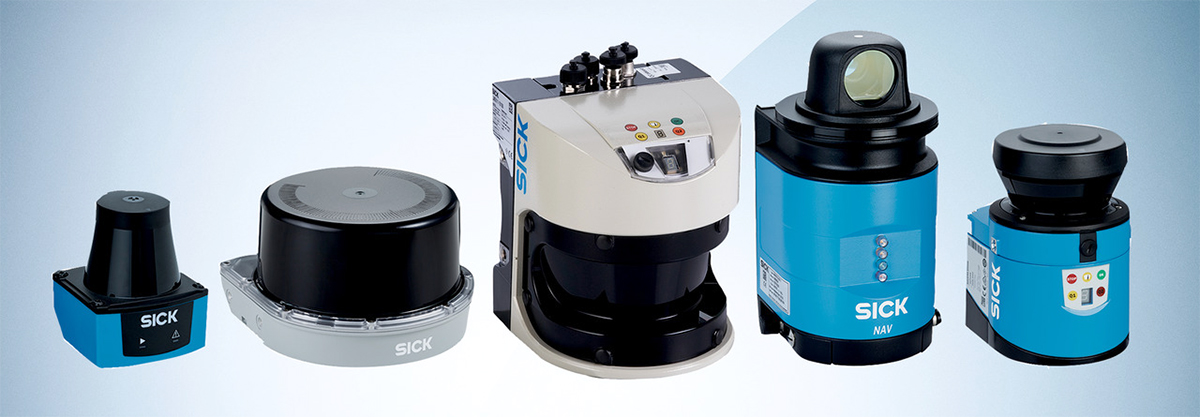
What common challenges do people face when it comes to selecting and implementing LiDAR sensors? Do you have any advice for overcoming these challenges?
Selecting a LiDAR sensor is fairly easy as customers are typically concerned with three factors: range, resolution, and speed.
- Range is self-explanatory: How far away do you need to be to detect a target? This should quickly and significantly narrow your selection.
- Speed is also pretty simple: How fast do you need to be able to detect something? If you’ve got gravity to consider — like in applications sensing falling objects — you want to a high scan rate to ensure accurate detection.
- Resolution is a bit more complicated. It basically comes down to the size of your detection target. When using LiDAR sensors, there will be spaces between measurements — and if the target is sized so that it’s possible to slip between light pulses, there’s a chance you won’t detect it. Then, because beams diverge as they travel, you must do trigonometry to solve the issue. So, we look at angular resolution, or the angle between individual beams. The further the target, the more width between individual measurements — and the higher the odds that objects pass undetected if your calculations are wrong. To help with this, SICK’s LiDAR sensors provide detailed specs about detection capabilities.
Environmental factors are another key consideration when selecting LiDAR sensors. There’s a big difference between using a sensor in a clean room versus outdoors, where common hazards include rain, snow, fog, dirt, dust, and vibration. But if you keep these considerations in mind, it should be easy to narrow your selections.
Ease of implementation is an essential consideration as well. For example, many customers aren’t aware of the complexity in handling point cloud data generated by 3D LiDAR sensors. It’s not something many engineers come out of school ready to work with, and not every 3D LiDAR sensor can process complex point cloud data right on the sensor.
Most SICK 2D and 3D LiDAR sensors feature built-in edge computing software applications that handle some of that processing at the sensor level — so customers don’t have to deal with all that raw point cloud data. These sensors let users create multiple detection zones in the configuration software and permanently store them on the sensors themselves. When an object is detected within one of these zones, the sensor transmits that information via an output device, like a PLC or stack light, to alert users. We take on some of the heavy lifting with 3D point cloud information to prevent customers from having to hire a software engineer or task theirs with spending weeks on integration. Integration is the heaviest lift, and we want to make that as simple as possible.
Lastly, as is the case with most product selections, cost is a key consideration. LiDAR sensors are generally not the lowest-cost sensors. I’ve seen costs drop dramatically over the past 12 years, but they’re still more pricy than photoelectric sensors and several others. SICK LiDAR sensors are priced as competitively as possible to reduce the weight of cost concerns, but the key is making informed purchasing decisions. Match your application needs to the capabilities of your narrowed selections, and avoid using a 3D LiDAR sensor if a 2D model gets the job done.
Please introduce us to SICK’s range of LiDAR sensors
SICK offers an extensive range of 1D, 2D, and 3D LiDAR sensors. Our 1D distance sensors can accommodate very short-range measurements and reliably detect targets 400 or more meters away.
Our broadest catalog is our 2D portfolio as our company was founded on handling this type of measurement. We’ve worked at it for a long time — perfecting the technology and building an expansive portfolio. We offer 2D LiDAR sensors that max out at distances ranging from 3m to 300m to satisfy a wide variety of application requirements.
We specialize in rugged LiDAR sensors and don’t offer many that aren’t outdoor rated. Almost all our LiDAR sensors are designed for industrial automation and — quite frankly — to be ruggedly used and abused. We do our own testing in-house and put our sensors through thermal cycling, shock, and vibration at levels unlikely experienced in real-world environments. This ensures they can reliably handle whatever customers throw at them.
We also incorporate specialized technologies to ensure accurate sensing in all types of environments. For example, most of our LiDAR sensors feature multi-echo technology. As mentioned, LiDAR emits light pulses that bounce off targets and send signals back to measure target distance. So, in theory, if you send out a light pulse, you get one back. But if there’s rain, dust, or other elements around, you’ll receive multiple signals from a single beam, and those additional signals look like noise. Our multi-echo technology — which is technically a bit of a misnomer since it detects reflections rather than echoes — looks for the strongest or latest signals that return, filtering out everything else to reduce noise and improve accuracy.
We use high-definition distance measurement (HDDM) technology in almost all our sensors as well. LiDAR sensors equipped with HDDM tech send out several smaller pulses instead of one big pulse. Then, they aggregate and average them to filter out the effects of elements like sunlight, allowing us to create less expensive, more efficient sensors. HDDM is something that only we do — it’s patented technology. We’ve been developing LiDAR sensors for almost 80 years, so we know what doesn’t work and how to fix it.
Traditional LiDAR sensors essentially send out consecutive series of big, cannon-shot-like pulses that require enormous energy and, as such, require large, expensive components like laser diodes to deliver that energy. Instead, our HDDM-enabled LiDAR sensors send up to 84 smaller light pulses, which means lower-cost laser diodes like what you’d find in a CD or Blu-ray player. If we get all the signals back — cool! But even if not, we can average them to deliver a nice, clean signal, even amidst environmental hazards ranging from glare to dust and rain.
Please introduce us to SICK’s newest range of 2D LiDAR sensors, the picoScan100 series
Our picoScan100 series sensors have been out for a little over a year and take advantage of everything we’ve learned about lasers and optics over the last 79 years. They’re the best of best — the smallest and most cost-effective LiDAR sensors in our catalog today. They’re only available as 2D LiDAR sensors, but we find there are many industrial automation applications ideally suited for these sensors. The picoScan100 series is divided into four variants: picoSCAN120 and picoSCAN150 Core, Prime, and Pro — each optimized for different applications.
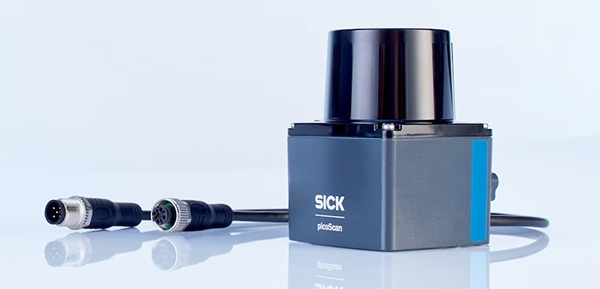
When evaluating LiDAR sensors, your primary concerns are range, resolution, and speed. The picoScan150 Core, Prime, and Pro sensors each offer various levels of all three, so you don’t have to pay for any capabilities you don’t need. They’re all equipped with our proprietary HDDM and multi-echo technologies, which enables them to deliver higher resolution measurements and greater stability than ever before, even in challenging indoor and outdoor environments.
SICK’s picoScan100 LiDAR sensors are also designed user-friendly. They have what we call “field evaluation functionality” built in, which allows users to connect to these sensors using any web browser or programming interface. Then, you can see what sensor the sees, define a detection field, and configure it to evaluate the defined field until programming is changed.
They’re also incredibly rugged. We’ve never had a sensor this small, capable, and cost-effective, so we’re excited to deploy picoScan100 in applications that are new to us. Automated agriculture applications are amongst those, and they’ve also been quite successful in industrial mobile robotics so far.
The picoScan120 is tailor-made for simple, indoor mobile automation tasks. It doesn’t have multi-echo, but it does have great range, detecting light targets at up to 30m. When we talk about range on a target, we have to consider target color or reflectivity. If you shoot light at a white target, ~90% of that light comes back, which is good — we need to see that return signal to measure the amount of time it took to come back. If you shoot the same amount of light at dark target, only 6–10% of the light comes back, which makes dark targets super tricky to see at extended distances. So, while the picoScan120 can see light targets at ~30m, its dark target detection — like car tires or black cars, for example — is limited to ~18m, which is roughly half of the light target range.

The picoScan family offers much better light and dark ranges as you step up through the variants. The picoScan150 Core detects light targets at up to ~25m and dark targets at up to ~12m. The picoScan150 Prime roughly doubles that, detecting light targets at up to ~47m and dark targets at up to ~25m, and the picoScan150 Pro almost doubles that again, detecting light targets at up to ~75m and dark targets at up to ~40m. You really see a big jump in range as you go from Core to Prime to Pro, which allows users to tackle difficult application challenges.
Additionally, resolution and speed improve as you climb from Core to Prime to Pro. The best possible resolution with Core is 25°, whereas with Pro — looking at its top model — you can reduce that to just 0.05°. That’s the best you’re going to find in this class of sensors. Speed also jumps from about 15Hz with Core up to 50Hz with Pro. So, there are a lot more capabilities in the upper levels, but not every application needs a super-long range, fine resolution, or high speed. That means our picoScan100 Core models still serve an important purpose.
Are there any success stories you’d like to share about SICK’s picoScan100 2D LiDAR sensors?
We have a customer in the warehouse automation industry who’s knowledgeable about mobile robots and 2D LiDAR. They had issues with dust creating reflections in the air, generating noise, and confusing their sensors. Even cardboard dust was building up on the sensors themselves, requiring periodic cleaning. They started looking for a better solution and evaluated various options on the market.
They tested a picoScan LiDAR sensor, along with sensor products from our competitor, placing them all in a man-made dust chamber to represent the worst-case scenario. They ran each sensor through those conditions and found that picoScan’s reliably outperformed the rest. Now, they’re using picoScan100 on all their mobile industrial robots.
Is there anything else you’d like RS customers to know about SICK, LiDAR sensors, or the picoScan100 2D LiDAR sensors?
The SICK team is actively engaged. We’re always soliciting customer feedback, and we use this information to create new product variants optimized for specific application challenges. If customers experience any shortcomings, we address them and make modifications to better suit their specific needs.
Our new picoScan100 LiDAR sensors were specifically developed with users in mind and with customization features built in. If any sensor offers too much range, for example, they’re designed to allow users to reduce the range to suit their application requirements. It’s all about the user experience and keeping LiDAR simple, so you can focus on other tasks.
SICK: Leading in LiDAR innovation since its introduction
RS offers an extensive selection of SICK sensors, including LiDAR sensors like the new SICK’s picoScan100 series, as well as encoders, light curtains, and a variety of photoelectric, proximity, pressure, temperature, inclination, and fork sensors. To learn more, check out “All about LiDAR technology” and visit the links embedded here.
